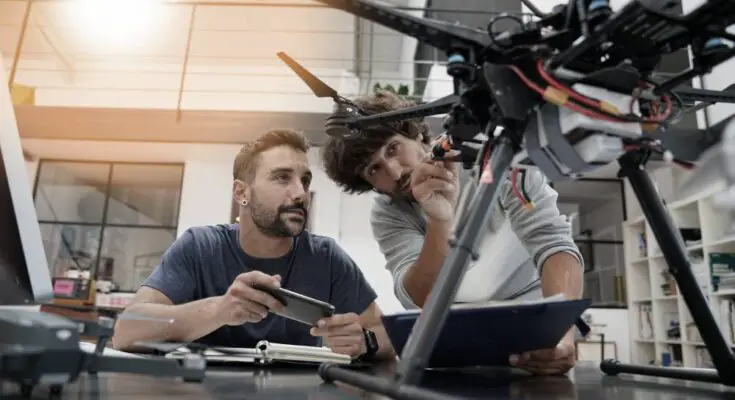Whether they’re professional drone operators or drone enthusiasts, everyone wants to get the most out of each aerial adventure. The key to extending your flight time lies in making sure you get the most power from your battery—but that doesn’t mean flying until that percentage drops to zero. If you’re ready to take your flight times to new heights, explore some actionable tips and strategies to maximize your drone’s battery life.
Avoid Aggressive Maneuvers and Land Carefully
How you handle your drone significantly impacts its overall flight time because of how it directly affects battery life. When you engage in rapid acceleration or deceleration, your drone’s motors consume a significant amount of power, reducing the overall flight time. Similarly, sharp turns or quick ascents and descents burden the battery.
When it comes time to land, gently doing so prevents shock to the drone’s motors and battery. This technique saves battery and minimizes the risk of damaging the drone’s components upon landing.
Optimize the Flight Path
Mastering the art of smooth operations begins with optimizing the flight path. A direct, efficient path requires less energy than a convoluted route with frequent changes in direction.
Before taking off, plan your route carefully, considering factors such as wind direction and areas of interest. Additionally, consider the altitude at which you’re flying. Maintaining a steady altitude instead of constantly adjusting can save battery power.
Keep an Eye on Your Battery Levels
Monitoring your drone’s battery levels closely during flight is critical to ensure a safe return. Many drones have built-in battery life indicators, which you can check via the drone’s controller or a connected app.
Set a threshold level at which you decide to return the drone to you. A common practice is to start the return journey when the battery reaches 15 to 30 percent of its capacity. Completely draining the battery until it reaches zero percent can damage the cells and reduce its overall lifespan.
Limit Your Hover Time
Although it might seem counterintuitive, hovering requires a considerable amount of energy. This is because the drone’s motors must work constantly to maintain a stable position against gravity and any environmental elements such as wind.
If your objective is to capture a specific scene or object, plan your shots in advance and keep your drone moving to the next point of interest. This strategy saves battery power and allows you to collect more footage during a single flight.
Properly Store Your Batteries
Ideally, you should store your batteries in a cool, dry place, away from direct sunlight or any source of extreme temperature, with a charge level of 40 to 60 percent. Remember that a fully discharged or fully charged battery can lead to a decrease in battery health over time.
For long-term storage, you should periodically check and maintain the batteries’ charge level every three months to prevent them from entering a deep discharge state.
The key to maximizing your drone’s battery life lies not just in the technology itself but also in how you manage and care for it. With mindfulness and a little bit of planning, you can keep your drone in the air longer.



